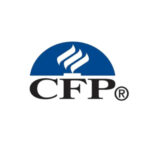College Funding Planning
We Serve people in Scottsdale, AZ, Brookfield & Johnson Creek Wisconsin
Smart College Planning Can Actually Reduces What You Pay

College costs have skyrocketed, but smart families in Scottsdale aren’t paying sticker price.
At Family Wealth Advisors, we’ve helped hundreds of Arizona families cut their college expenses by an average of 40% through strategic planning that most parents never hear about.
Here’s what makes us different: instead of just telling you to save more money, we show you how to legally position your finances so colleges offer your family more aid, grants, and scholarships.
It’s not about gaming the system—it’s about understanding how financial aid really works and using that knowledge to your advantage.
The result?
Your student gets the education they deserve without drowning your retirement plans or taking on crushing debt.
Why Scottsdale Families Choose Our College Planning Approach
Most financial advisors treat college planning like retirement planning—just save more and hope for the best.
That’s expensive and often ineffective.
We take a completely different approach based on how financial aid actually works.
Our clients regularly save $50,000 to $150,000 per child on college costs through strategies like:
- Positioning assets to maximize financial aid eligibility
- Identifying overlooked scholarships and grants
- Strategic timing of financial moves before filing the FAFSA
- Finding colleges that offer the best value for your student’s goals
- Creating backup funding plans that don’t derail your other financial goals
We’ve been serving Scottsdale families for over 15 years, and we understand the unique challenges facing Arizona parents—from navigating in-state vs. out-of-state tuition to understanding how Arizona’s tax advantages can work in your favor.
Our Proven College Planning Process
Step 1: College Funding Analysis
We start with a comprehensive analysis of your current financial situation and project realistic college costs based on your student’s interests and abilities. This isn’t just about looking at today’s tuition—we factor in inflation, room and board, and all the “hidden” costs most families don’t anticipate.
Step 2: Financial Aid Optimization
This is where the magic happens. We analyze your income, assets, and family situation to identify specific moves that can dramatically increase your financial aid eligibility. Sometimes simple changes in how you hold assets can mean thousands more in aid.
Step 3: Scholarship Strategy Development
Every student is unique, and scholarship opportunities should match their strengths. We help identify scholarship opportunities that align with your student’s achievements, interests, and background—including many local Arizona scholarships that other families miss.
Step 4: College Selection Guidance
Not all colleges are created equal when it comes to financial aid. We help you identify schools that are not only good academic fits but also tend to offer generous aid packages to students with your family’s profile.
Step 5: Implementation and Ongoing Support
We don’t just give you a plan and walk away. We help you implement each strategy at the right time and adjust as circumstances change. From freshman year of high school through college graduation, we’re your partners in making college affordable.
Common College Funding Mistakes We Help You Avoid
Mistake #1: Saving money in the student’s name
This can reduce financial aid eligibility by up to 20% of the asset value every year. We show you better alternatives.
Mistake #2: Not understanding how timing affects aid
When you sell investments, receive bonuses, or make Roth conversions can dramatically impact your aid package. Timing is everything.
Mistake #3: Assuming you won’t qualify for aid
Many families earning six figures still qualify for need-based aid, especially with multiple children in college simultaneously.
Mistake #4: Only looking at sticker price
The college that costs $60,000 per year might actually be cheaper than the one that costs $40,000 if they offer better aid packages.
Mistake #5: Starting too late
The best strategies begin in your student’s sophomore year of high school. Starting senior year limits your options significantly.
Bridging the College Funding Gap
Addressing the college funding gap can seem daunting, but understanding your loan options, exploring private student loans, and considering creative solutions can help you navigate this challenge effectively.
Evaluating College Loan Options
Federal student loans should be one of your first considerations.
These loans often offer lower interest rates and more flexible repayment terms compared to private options.
Evaluate your eligibility for Direct Subsidized and Unsubsidized Loans, which are designed based on financial need and are available to undergraduate students.
Another choice is the Direct PLUS Loan for parents, which covers costs not met by other financial aid.
When evaluating loans, consider the interest rates, repayment terms, and any associated fees.
Federal loans typically have lower fees and offer benefits like deferment and income-driven repayment plans.
Understanding these terms will equip you to make informed decisions that minimize the long-term impact on your finances.
Understanding Private Student Loans
Private student loans can be a viable alternative or complement to federal loans if additional funds are needed.
They are offered by banks, credit unions, and online lenders and can bridge the gap between your remaining college costs and available federal aid.
Ensure you research private loan options comprehensively before committing.
Interest rates on private loans can vary significantly based on your credit history.
They might offer fixed or variable rates, which impact debt repayment.
Fixed interest rates remain constant, while variable rates can fluctuate.
Compare terms, fees, and repayment options to choose the most economical choice for your situation.
Creative Solutions for Gap Funding
Exploring creative ways to fund the remaining college costs involves leveraging scholarships, grants, and work-study programs.
Submitting the FAFSA allows you to access federal and state grants, a crucial resource for reducing out-of-pocket expenses.
Encourage your student to apply for scholarships specific to their skills, interests, and achievements.
Consider community contributions or crowdfunding to assist in funding education.
Additionally, part-time work or internships related to their field of study can provide income while enhancing a student’s resume.
These creative methods can help reduce debt and ease the burden of funding the college gap.
Frequently Asked Questions
When should we start college planning?
The ideal time to start is during your student’s sophomore year of high school. This gives us enough time to implement strategies that can significantly impact financial aid eligibility. However, we can still help families who start later—even senior year planning can yield substantial savings.
Do you only work with high-income families?
Not at all. Our strategies work for families across income levels. Middle-income families often benefit the most because they’re in the sweet spot where smart planning can dramatically increase aid eligibility.
How much can we realistically save on college costs?
Every family’s situation is different, but our clients typically save between $30,000 and $150,000 per child through our strategies. The exact amount depends on your income, assets, student’s abilities, and college choices.
What if our student doesn’t know what they want to study?
That’s completely normal. Our planning process helps families prepare for multiple scenarios while keeping options open. We can adjust strategies as your student’s interests become clearer.
Do these strategies work for graduate school too?
Some strategies apply to graduate school, but the rules are different. We help families understand these differences and plan accordingly, especially for expensive programs like medical or law school.
How do your fees work?
We offer both project-based college planning services and comprehensive financial planning that includes college strategies. During your free consultation, we’ll explain our fee structure and help you choose the approach that makes the most sense for your situation.
Why Choose FWA
The FWA Team
Meet the Advisors Who Put Your Interests First

Jeffrey J. Biro, CEP, RFC
President

W. Ryan Zenk, JD, CFP®
Chief Executive Officer

John Oxenhandler
VP of Investment Operations

Mike Wendt
Registered Representative

Debbie Basom
New Client Services Director





